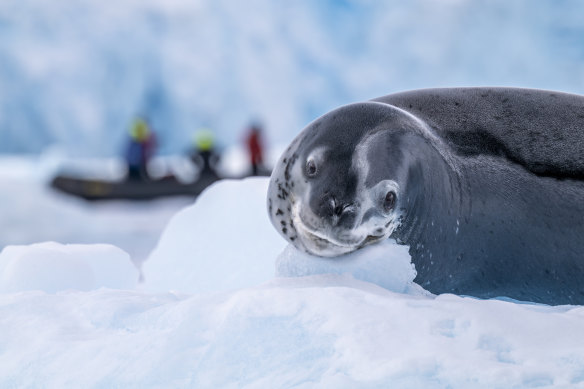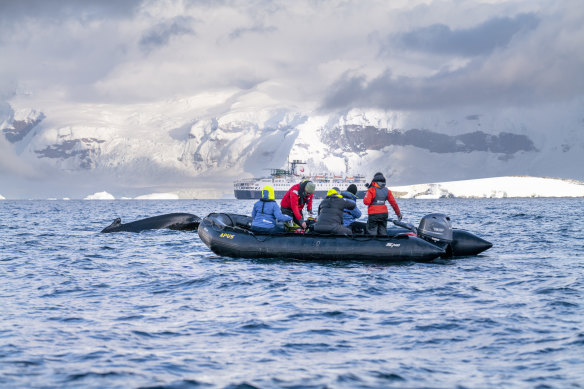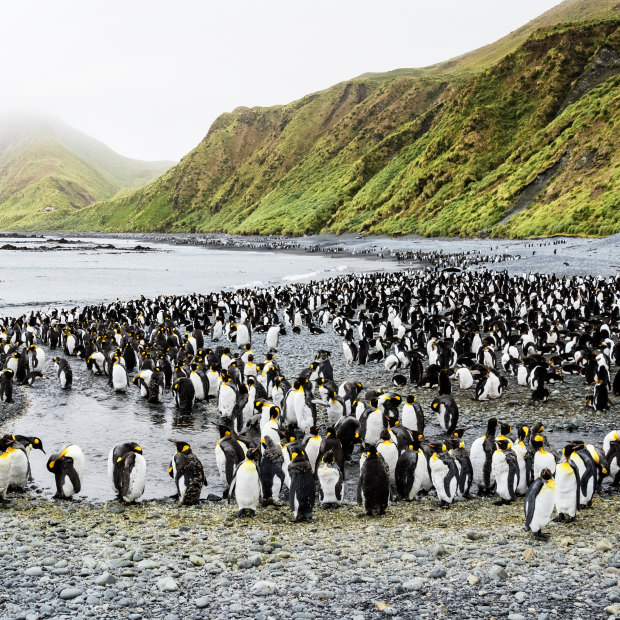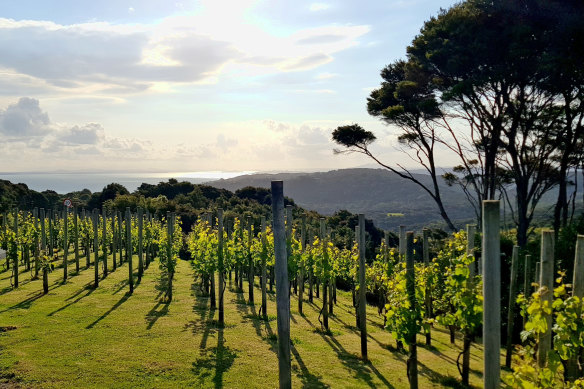When I came home from Antarctica, I was confronted by an unusual problem. I had no idea how to describe it to anyone. This was problematic, not least because my livelihood largely depends on my ability to, well, describe stuff. I spent ages wondering why it was so hard, and I think it was a combination of things. 1) It’s so far; 2) it’s so weird; and 3) it worries the hell out of me.
I realise these things also make it tricky to recommend as a holiday destination. Do you really want to go somewhere that almost kills you to get to, that is strange and uncomfortable and maybe even dangerous to be, and that will keep waking you up in the night for months afterwards? Well, yes, you do. And here’s why.
Far, far away
The Antarctic is as far as you can get from civilisation while still remaining on planet Earth. My trip there wasn’t quite as bad as that of Ernest Shackleton, who spent almost 15 months foiled by the pack ice, made two emergency boat voyages (one of more than 1500 kilometres) and climbed a mountain range in order to save his men, all without ever touching the Antarctic mainland. But it did involve two equatorial crossings, three continents, four flights, five airports and more than 40 hours’ flying and transit time. On my last leg bar one (a 10-hour overnight flight) I was sick four times. It was unimaginably hideous and my only advice is: do not do it. There are direct flights from Australia to South America: use them, use them, use them.
Having not, despite my expectations, died of sheer misery on the plane, I boarded Intrepid Travel’s Antarctic cruise ship in Ushuaia, at the southern tip of Argentina. Ocean Endeavour is not the most luxurious of the vessels carrying tourists past the 60th parallel south, but it is one of the most environmentally conscious. Intrepid is an Australian-founded tour company famous for its off-the-beaten-track adventures and its social-capital credentials. It offsets its entire carbon load for its Antarctic trips; has donated $150,000 to Antarctic whale study through the Intrepid Foundation; and offers free berths to scientists studying the flora, fauna and ecology of the region, who give talks to the paying passengers. (I too was a guest of Intrepid.)

Most of the wildlife shows no fear of visitors. Credit: Courtesy of Intrepid
It takes about 48 hours to cross the Drake Passage from South America to the Antarctic Peninsula, and it’s potentially one of the roughest sea journeys in the world. Earlier this season, a passenger (travelling with another company) was killed crossing the Drake when a rogue wave smashed several ship windows during a storm. Antarctica itself has its dangers: 3.5-metre leopard seals (known – albeit rarely – to attack Zodiac dinghies), seasickness (medicate in advance!) and the masochistic sea-dunking known as the polar plunge (remember: optional!). But there’s also the chance that one morning the captain might announce, as ours did, that your ship, nosing among the icebergs and the gleaming shore, is in uncharted waters – waters for which no map has ever been made. Which is why you’ve braved the dangers in the first place, right?
Wildly weird, weirdly wild
Antarctica has two great drawcards beyond straightforward seventh-continent bragging rights: animals and landscape. The landscape is just as you imagine, but far more beautiful than you expect. I thought we’d be enveloped in blizzards or frozen solid 24/7, but during the summer tourist season, conditions can be spectacular: shining sun and sea and dazzling ice and snow. The animals, meanwhile, are breathtaking whatever the weather. They’re scientifically classed as extremophiles, which feels right not only factually but emotionally. The penguins can all drink salt water, absorbing the salt into a gland near their eyes and letting it drip out of their noses. Seals are the most southerly dwelling mammals on earth (the Weddell seals); can spend two hours underwater in a single dive (the elephant seal); and can even sleep underwater.
Loading
The two biggest animals on earth – the Antarctic blue whale, as big as a 737 jet, and the fin whale, only slightly smaller – both inhabit Antarctic waters, as do the much more common but equally glorious humpback and minke whale. As for seabirds, there is everything from the wandering albatross (3.5-metre wingspan, biggest in the world) to the Arctic tern (only 35 centimetres long but with a 30,000-kilometre annual migration) – take your pick.
And the weird thing about all this wildlife is how easy it is to see. Intrepid runs two Zodiac cruises a day for all on board, weather permitting – plus optional kayak trips and photography courses – during which you don thousands of layers, board small inflatable boats and cruise the bays or land onshore. You might find yourself visiting penguin rookeries or seal colonies, old huts or even the Antarctic post office, where you can post a letter to your future self, saying how lucky you are to be in Antarctica.
During my entire trip I only saw one animal – a small seal with enormous eyes below a furrowed brow – try to avoid us. All the others just carried on doing their thing: flapping or swimming or – very often – sleeping. Sometimes they look indignant (cue, penguins) but never afraid. Minkes and humpbacks occasionally approach the boats, and all the seals seem to be smiling.
Worries of the world
I’m glad the animals are smiling, because there were moments in Antarctica when I felt like crying with despair. There’s no escaping the dangers facing the continent: the melting sea ice; the krill fishery; even the growing tourist industry. This season 100,000 people visited Antarctica, 40 per cent more than its biggest previous season, 2019-20. Tourism here risks introducing alien organisms to the region, and certainly raises black carbon (soot) concentration. It also loads large numbers of people into an ecologically fragile area. But on the upside, companies generally adhere to stringent environmental protections, strictly controlled permits and relatively low-impact activity. And in the case of Intrepid, the expedition staff – many of whom are scientists, ecologists, climate-change consultants – are not without hope for the continent, which they pass on via lectures on board.

Scientists studying the region might be fellow passengers – and give talks to tourists.Credit: Courtesy of Intrepid
So, after waiting for a penguin to waddle importantly in front of you, or watching the eye of a whale pass beneath your rubber boat, you can belly up to the bar, buy an enormous drink, and listen to someone tell you something positive about the future. Like the fact that we’ve solved huge climate crises before (think the ozone hole or acid rain); or that the technological and economic barriers to stopping climate change have been overcome: what matters now is that we choose to do it. Even without an iceberg in my glass (the only Antarctic dream I did not fulfil), I’ll drink to that. Amanda Hooton
Cruising the Sub-Antarctic Islands, Antarctic Peninsula

The UNESCO-listed Macquarie Island is the breeding boudoir of 3.5 million seabirds.Credit: Getty Images
WHY: This alternative Galapagos is a lot closer to home.
THE EXPERIENCE: The Snares, the northernmost of the New Zealand Sub-Antarctic Islands, first earned their name as an 18th-century shipping hazard. Today, they more than justify it as an untrammelled wilderness so alluring it could be animatronic. Fur seals thread waters churning with penguins as if shot out of a cannon.
On shore, where introduced species have never stepped, sea lions laze close enough to touch beneath forests of gnarled megaflora, as metres-long skirts of seaweed furl and unfurl with the waves while petrels, albatrosses and shearwaters circle overhead. And gobsmacking as they are, the Snares aren’t even the entrée on Ponant’s 15-day cruise of New Zealand’s Sub-Antarctic Islands, the highlight of which, the UNESCO-listed Macquarie Island is actually part of Tasmania. Part of an area described as the Galapagos of the Southern Ocean, “Macca” is the breeding boudoir of 3.5 million seabirds, most of them penguins (royals, kings, gentoos and rockhoppers) as well as fur and elephant seals.
Even South Island wonders that long ago lost their souls to photography, like Milford Sound, come alive again, up close and personal.
IDEAL FOR: Those who prefer the path less travelled.
LIKE THIS? TRY: South Georgia Island in the South Atlantic –the other wildlife/wilderness destination mentioned in the same breath as Galapagos and the Sub-Antarctic Islands. Brook Turner
Wine-tasting on Waiheke Island, New Zealand

Waiheke Island has quickly become a top wine destination. Credit: iStock
WHY: Think New Zealand wine and you’ll probably think Marlborough and Central Otago. Waiheke Island is a newer wine region, only a 45-minute ferry ride from Auckland, and small enough to do in a day.
THE EXPERIENCE: Waiheke Island is popular with wealthy New Zealanders but also Americans and Europeans, many of whom have bought on the 92-square-metre island as a hedge against global catastrophe. What was once a bohemian, artsy hangout is now a place full of $3 million beach shacks, and a population that swells from less than 10,000 to more than 35,000 people during summer. Try a winter weekend at Mudbrick Vineyard and Restaurant, a popular wedding and lunch venue, which also has two cottages on the property designed for couples to rent, complete with outdoor hot tub, indoor pot-belly stove, and views across the Hauraki Gulf towards Auckland. Book with locally owned Ananda Tours, who’ll take you to tastings at half a dozen cellar doors across the island, from Mudbrick to Kennedy Point, Stonyridge and Casita Miro, the latter of which does an excellent tapas to go with its vintages.
Loading
IDEAL FOR: Foodies and vino devotees.
LIKE THIS? TRY: Learning more about olive oil – what makes it good, what makes it bad – at Rangihoua Estate, the biggest producer of olive oil on the island. Katrina Strickland
In association with Traveller. Thank you to Julietta Jameson, Jane Reddy and Anthony Dennis from team Traveller for their help on this issue.
To read more from Good Weekend magazine, visit our page at The Sydney Morning Herald, The Age and Brisbane Times.
Stay connected with us on social media platform for instant update click here to join our Twitter, & Facebook
We are now on Telegram. Click here to join our channel (@TechiUpdate) and stay updated with the latest Technology headlines.
For all the latest Life Style News Click Here
For the latest news and updates, follow us on Google News.
